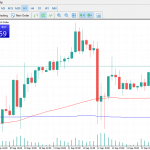Table of content
Rules that proprietary trading firms prohibit are typically described on their web page in the rules section or together with the specs of funded accounts. Despite this, some firms might hide important rules in terms and conditions or other places on the website, ensuring traders most likely breach them and fail at the challenge. Hidden rules mainly indicate that the firm is a scam and fraud. To ensure you always select a firm without hidden rules, we have created this guide where we explain what hidden rules are, list the most common hidden rules, and list firms that do not have hidden rules.
What are forex prop firm hidden rules?
Hidden prop firm rules are hidden from clear sight in terms and conditions and other parts of the website where it is difficult to spot and learn about it. These rules are the main weapon in the hands of fraud and scam prop firms that are just trying to steal away fees paid for challenges and won’t allow traders to pass an evaluation and withdraw profits. Hidden rules are completely different from general rules of prop firm trading, as they are designed to ensure the trader fails the challenge, while general risk rules ensure the capital of the prop firm is protected. Hidden rules can seriously ruin a trader’s experience, as they are very easy to overlook. These rules can also be built inside FAQs and when a trader breaches them they get disqualified. This creates blocks where traders won’t trust prop firms, even safe ones. This is why it is critical to only select props that do not have hidden rules and actually allow traders to make and withdraw profits.
Prop firms have various rules that must be visibly listed on the website so that traders can easily learn about them and stay compliant. The most important rules that all firms have include daily risk limit, maximum drawdown, and profit targets to get funded. A daily risk limit is a rule that prohibits a trader from losing more than a certain percentage of their account on any trading day. The maximum drawdown is the maximum loss a trader can experience at any time on their funded account. These two rules allow prop firms to protect their capital and ensure only responsible traders can trade.
Hidden rules you should know as a prop trader
Detecting hidden rules and avoiding the firms that have hidden trading rules is critical in prop trading. Not only are you saving time by opting for top firms but also avoid emotional and psychological frustration which is critical in financial trading.
Hard breach rules versus soft breach rules
Hard breach rules are rules that can not be violated without getting disqualified and losing your funded accounts. Soft rules, on the other hand, are rules that when violated result in a canceled trading position or account freeze, which can be easily solved. Soft rules sometimes include the duration of a trading position or mandatory stop-loss, but depending on the prop firm, they might be hard rules. Hard rules are stricter rules that traders must not breach, or lose their account, while soft rules allow traders to gain back access to their account easily. Prop firms will often close open positions that were opened by breaking the soft rules, which is much less damaging for traders. Soft and hard rules are typically different for different proprietary trading firms. Forex prop firm hidden rules are much more dangerous as they are not easily detected by traders and can often cause traders to lose their funded accounts.
List of common hidden rules
Knowing and anticipating which rules are typically hidden from traders will have our readers quickly check for these rules and ensure the firm lists them on the website clearly. Let’s list the most popular hidden rules that every trader should be aware of.
- Stop-loss rule — Some scams require traders to use stop-loss orders for all trading positions and make this rule a hard branching rule. It is typically hidden in the FAQs section or terms and conditions, written with smaller letters to make it difficult to spot.
- Maximum risk per trading position — This rule restricts a trade to open a position with more than a certain percentage of each trading position. Breaking this rule can end up in a disqualification, especially if it’s a scam firm.
- Consistency rules — Sets some trading standards, including trading style and low-size consistency. If all trades do not have the same lot sizes used, scam firms will disqualify traders and steal the fees paid for the challenge.
- Maximum number of open orders — This rule restricts traders from opening trading positions more than a certain predetermined number which is typically hidden somewhere on the website, decreasing the chances of passing the evaluation challenge.
- Minimum open trade time — Some scams also set the minimum time traders must hold open positions, or they will cancel the profits. Scam firms will surely not cancel losing trades opened for less than a predetermined time but will deduct any profits made by breaching this rule.
- Maximum size of lot size cumulatively — Some firms also prohibit traders from opening trading positions with more than a certain lot size, and traders will quickly get disqualified if they breach this rule.
- Trading style restrictions — Some firms prohibit copy trading, hedging, EAs, grid systems, martingales, and others which are not clearly given on the website but will end up in an account closure if breached.
Surely, many reliable firms might require any of the rules listed above, but it is written and described on their website visibly to ensure traders see all the rules and are compliant.
Scam firms might also change hard breach rules constantly, making it nearly impossible to pass the challenge and start trading for profits, which can be very dangerous.
How to spot hidden rules
One way to ensure the firm allows your trading strategy, lot size, and stop-loss policies is to contact the firm’s support directly via live chat and ask questions. If the firm prohibits your trading style or lot size, the support must inform you. It is a very good idea to also ask about mandatory stop-loss rules to ensure you don’t lose your profits easily. Another more convenient way is to check the firm’s reviews and see what other traders have to say about its services. Ask the support which hard breach rules they have and if they share a link. Read through all the rules to ensure you are allowed to use your strategy and define whether it is realistic to sign up with the firm. It is always suggested that you write down or copy and paste the rules in a doc and see how the firm calculates the maximum drawdown to ensure your strategy aligns with the firm’s rules.
Compare your trading strategy with the firm’s rules, read through the FAQ section, and search the terms to ensure you can use your trading method without the risk of breaching any hard rules. Consider and write down your trading strategy and compare it with the firm rules.
If the support confirms any of the rules that are not clearly visible on the website, then it is a good idea to avoid the firm in question. There is a high chance of other hidden rules disqualifying you during evaluation.
Top prop firms without hidden rules
Below is the list of firms that do not have hidden rules and are known for their transparency, safety, and simplistic approach.
| Firm | Min funding | Max funding | Min funding fee | Profit share | Daily loss limit | Max loss limit | Profit target |
|---|---|---|---|---|---|---|---|
| FundedBull | 5,000 USD | 250,000 USD | 40 USD | 90% | 4% | 8% | 6% |
| Blue Guardian | 10,000 USD | 200,000 USD | 47 USD | 85% | 4% | 6% | 6-10% |
| Funded Trading Plus | 5,000 USD | 200,000 USD | 119 USD | 80% | 4% | 8% | 8% |
| FTUK | 14,000 USD | 90,000 USD | 99 USD | 80% | None | 8% | 10% |
| The5ers | 5,000 USD | 200,000 USD | 39 USD | 80% | None | 10% | 6-10% |
FAQs on prop firm hidden rules
What are forex prop firm hidden rules?
Do all prop firms have hidden rules?
Are prop firm hidden rules legal?

